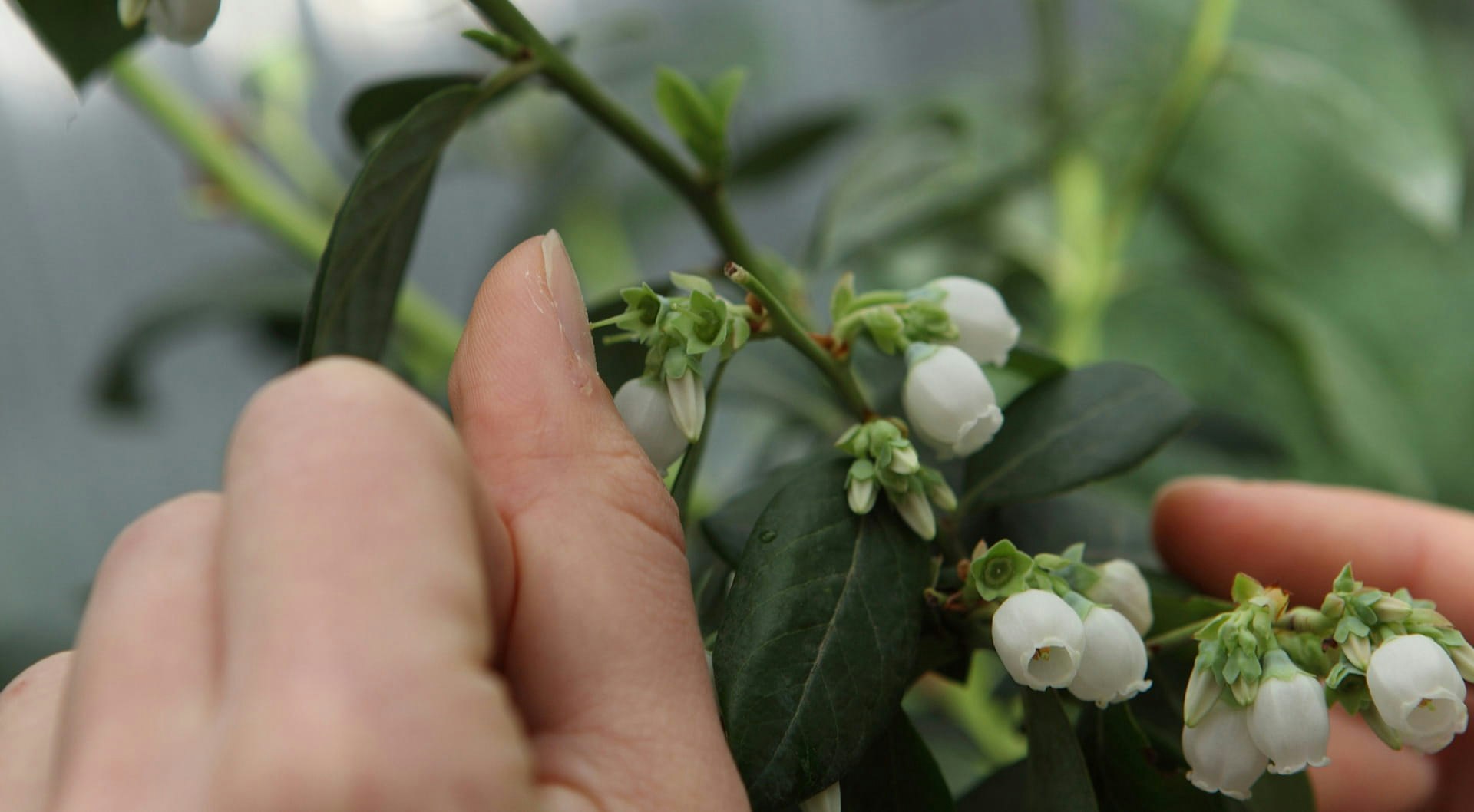Recipes
Cross Breeding Plants: How Driscoll’s Cross Pollinates & Breeds Berries Naturally

When breeding Driscoll’s berries, there are a lot of things our Joy Makers must consider— flavor, appearance, disease resistance, the list goes on. So how do we make sure we’re breeding the best plants that grow the best berries? The answer: we naturally cross-pollinate plants, and a lot of them.
To learn more about how our team naturally cross-pollinates berry plants , we sat down with Jessica Gilbert, Driscoll’s Molecular Blueberry Breeder , to learn more about how she and her team breed only the finest berries.
Tell us about cross-pollination, the natural breeding method you use to breed blueberries.
Every year, our Joy Maker team hand-pollinates hundreds of plants to create what they call “crosses” — a cross-pollination of a mother plant and a father plant. Of those crosses, our team produces hundreds of new plants. Because of naturally occurring genetic segregation, these crosses aren’t identical (just like brothers and sisters aren’t identical). After the plants produce fruit, our team examines thousands of crosses from our breeding programs to find the one percent that make the cut. Yes, that’s a lot of berry growing—and a lot of berry tasting!
“With every cross-pollination you have a vision. For example, take two parent plants: one of them has great flavor and one of them has great yield. What I’m looking for is a plant that has both great flavor and high yield,” Jessica says.
What are the steps in cross-pollination?
When Jessica and her team find desirable characteristics in two plants, they take pollen from the first plant and add it to the second plant, creating a new variety.
Hand-pollination is a painstaking task, and one that our Joy Makers are true experts at. Jessica explains the steps. “First, we tweeze off the petals and the anthers. We have to make sure we don’t tweeze off the pistil, because that’s where we apply the pollen. Then we squeeze the pollen onto our fingernail and put it on the pistil. The pistil is where the pollen travels down the flower’s pollen tube and into the ovary to fertilize the eggs that we get to seed. Then we tag the plant and hope that the cross works.”
Because the flower on a berry plant only lasts a short time, there’s a lot of teamwork that goes into cross-pollinating these plants. “It’s a pretty big push for labor,” Jessica explains. “We have a crew that’s in the greenhouse pretty much all day, for about a month. They run through a list of hundreds of crosses, find the father plant, and collect all the open flowers for pollen.”
Are Driscoll’s berries genetically modified?
No. The breeding methods we use at Driscoll’s are traditional and natural breeding techniques that have been used by farmers for thousands of years. By using this natural method, our Joy Makers never need to genetically modify their berry plants.
The next time you enjoy juicy and flavorful Driscoll’s berries, you can rest assured that there is an entire team of Joy Makers—from cross-pollination to packing—behind every bite. Want to meet Jessica and learn more about her work? Watch her Pursuit of Flavor video here .

